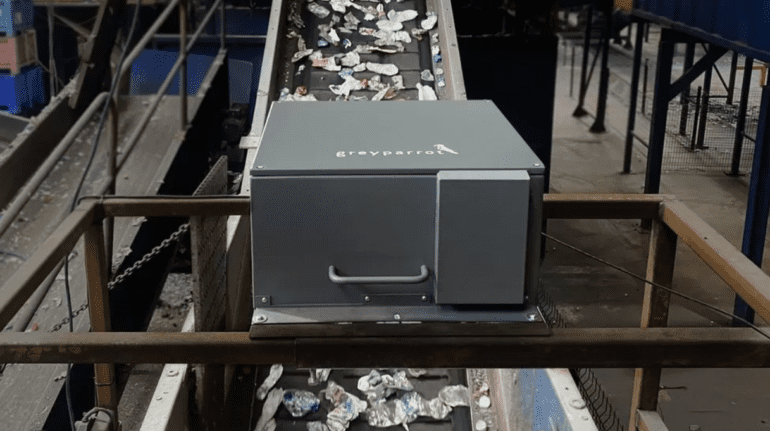TL;DR:
- AI technology analyzes waste processing and recycling facilities in real-time, helping to tackle the global waste crisis.
- Greyparrot, a UK start-up, deploys AI-powered cameras to track and categorize 32 billion waste objects annually.
- The data generated by AI systems provides insights for waste managers, regulators, and brands to optimize resource usage and drive sustainable practices.
- Collaboration between companies like Footprint and Polytag fosters the development of eco-friendly packaging and promotes transparency in recycling.
- Initiatives such as deposit return schemes and efforts to combat e-cigarette waste are being introduced to encourage recycling and reduce landfill waste.
- Consumers play a crucial role by embracing sustainable habits and consuming less.
Main AI News:
The staggering amount of waste produced worldwide has reached unprecedented levels. Recent statistics from the World Bank reveal that a staggering 2.24 billion tonnes of solid waste were generated in 2020 alone, with projections indicating a staggering increase of 73% to 3.88 billion tonnes by 2050. Plastic waste poses a particularly daunting challenge, as over 8.3 billion tonnes of it has been accumulated since large-scale production began in the 1950s. These alarming figures demand immediate attention and innovative solutions.
Enter Mikela Druckman, the visionary founder of Greyparrot, a cutting-edge UK start-up pioneering the use of artificial intelligence (AI) to analyze waste processing and recycling facilities. Druckman, having dedicated significant time to studying our discarded waste, recognized the pressing need for effective waste management. Greyparrot has harnessed the power of AI technology, deploying advanced cameras above the conveyor belts in approximately 50 waste and recycling sites across Europe. These cameras, in tandem with sophisticated AI software, enable real-time analysis of the waste stream.
The field of AI has made remarkable progress in recent years, particularly in image processing capabilities. Nevertheless, training AI systems to recognize and categorize various types of waste proved to be a formidable challenge. Druckman explains that objects like crumpled, crushed, and soiled plastic bottles present unique complexities that demand sophisticated AI algorithms. Greyparrot’s AI system, however, has overcome these hurdles and currently tracks a staggering 32 billion waste objects annually, constructing a comprehensive digital map of waste.
The information gathered by Greyparrot holds significant potential for waste managers, facilitating operational efficiency improvements. Moreover, this invaluable data can be shared with regulators, providing them with a deeper understanding of waste materials and their impact. Druckman emphasizes the interconnection between climate change and waste management, highlighting the need to recover resources efficiently. By implementing stricter regulations and reevaluating packaging design, we can revolutionize the entire value chain and optimize resource usage.
The utilization of Greyparrot’s data extends beyond waste management. Druckman hopes that major brands and producers will leverage this information to develop more reusable and sustainable products. By incorporating insights gained from waste analysis, companies can drive positive change and reduce their environmental footprint. One such company leading the charge is Footprint, which collaborates with supermarkets and industry giants like Gillette to replace plastic packaging with eco-friendly alternatives made from plant-based fibers. Encouragingly, initiatives like these are gaining momentum, aiming to eradicate the myth of recycling and foster genuine sustainability.
Nonetheless, there are still significant challenges to overcome. Greenwashing, the misleading marketing of products as environmentally friendly, remains a prevalent issue. Consumers often encounter bewildering claims about eco-friendly packaging, prompting confusion and doubt. To address this, Polytag, a UK-based firm, has devised a clever solution. They apply ultraviolet (UV) tags to used plastic bottles, invisible to the naked eye, which are then read by Polytag machines at recycling plants. The data, including the number of recycled bottles, is uploaded to a cloud-based app, offering brands unprecedented visibility and transparency.
While progress is being made, the journey to effective waste management is far from over. The UK government, along with Wales and Northern Ireland, plans to launch a deposit return scheme by 2025. This initiative will introduce “reverse vending machines” across various locations, enabling individuals to deposit plastic bottles and metal cans in exchange for monetary compensation, promoting a culture of recycling. However, new challenges continue to emerge, such as the mounting electronic waste generated by disposable e-cigarettes, or vapes. This presents a formidable obstacle, as their complex composition makes recycling difficult.
Experts argue that a paradigm shift is necessary, challenging the prevailing culture of single-use consumption. Ray Parmenter, from the Chartered Institute of Waste Management, highlights the need to prioritize the circular economy and maximize the use of critical raw materials like lithium. Mikela Druckman concurs, urging consumers to consume less as the most significant change they can make. While industry leaders and policymakers play essential roles, individuals must embrace sustainable habits to create lasting change.
Conclusion:
The incorporation of AI technology in waste management has significant implications for the market. It provides valuable insights that enable waste managers to improve operational efficiency, regulators to understand waste materials better, and brands to develop more sustainable products. The emphasis on eco-friendly packaging and transparency in recycling practices is reshaping consumer expectations. As governments and organizations implement initiatives to promote recycling and reduce waste, there are growing opportunities for businesses to innovate and contribute to a more sustainable future.

